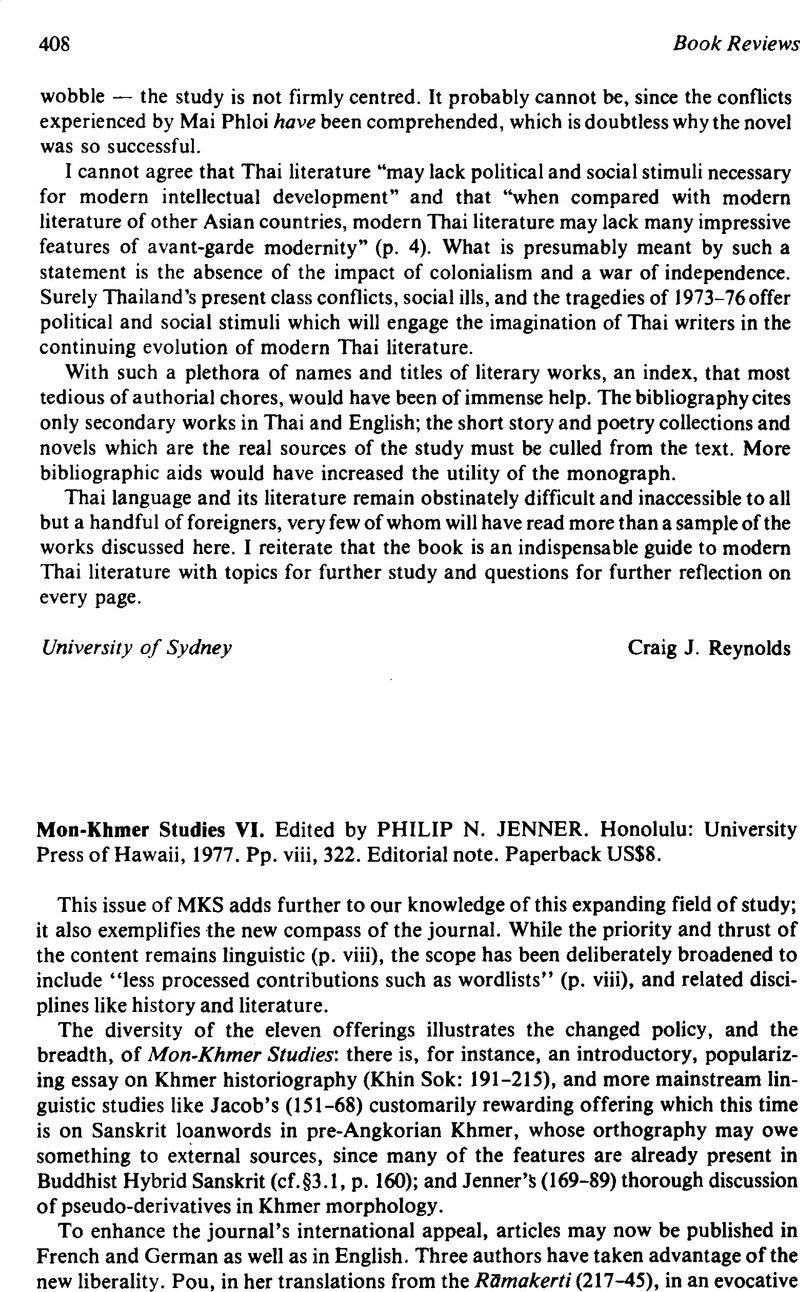No CrossRef data available.
Article contents
Mon-Khmer Studies VI. Edited by Philip N. Jenner. Honolulu: University Press of Hawaii, 1977. Pp. viii, 322. Editorial note. Paperback US$8.
Published online by Cambridge University Press: 24 August 2009
Abstract

- Type
- Book Reviews
- Information
- Copyright
- Copyright © The National University of Singapore 1980
References
1. Vaudeville, Charlotte, Le Ramayan de Tutsi Das, Texte hindi traduit et commenté, Paris, “Les Belles Lettres”, 1977, pp. iv, 211Google Scholar, Collection “Le Monde Indien”.
2 Pou, S. & Jenner, P.N., “Some Chinese Loanwords in Khmer”, Journal of Oriental Studies 11, no. 1 (1973): 1–90Google Scholar.
3. The male and female indicators ?u and ka (p. 247) apparently developed from identical masculine and feminine third-person pronominal affixes. See Simon, I.M., “The Verbal Pieces in Khasi” (M. Phil., diss., London University, 1974), pp. 20–24Google Scholar. Perhaps some gender classifications may be dictated by vowel quality, a phonaesthetic distinction? See Simon, op. cit., p. 100, on people of different sizes: sbak, sbek, sbik, etc.


